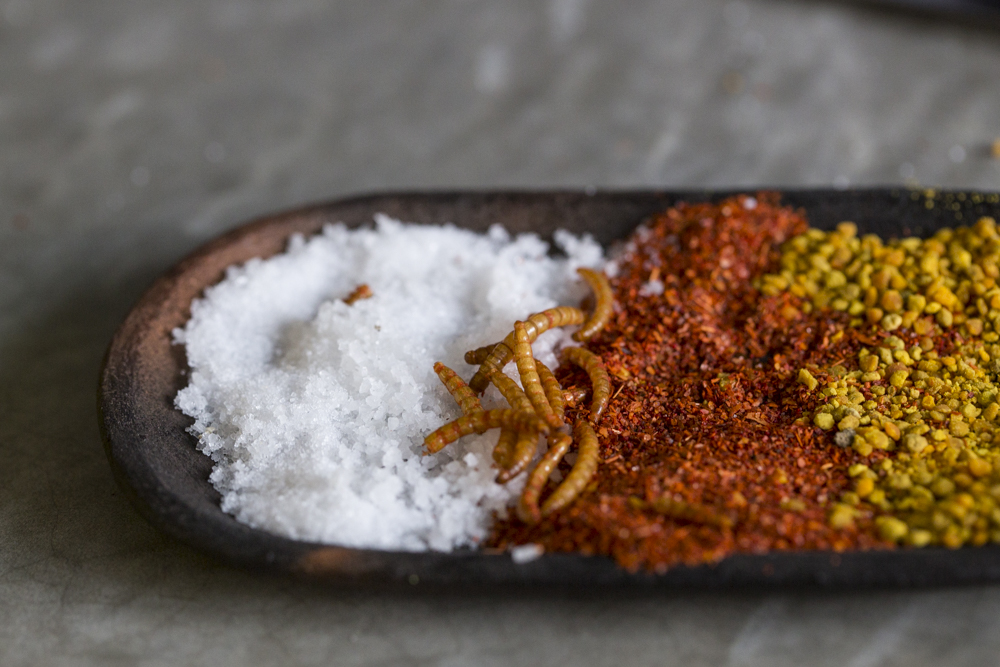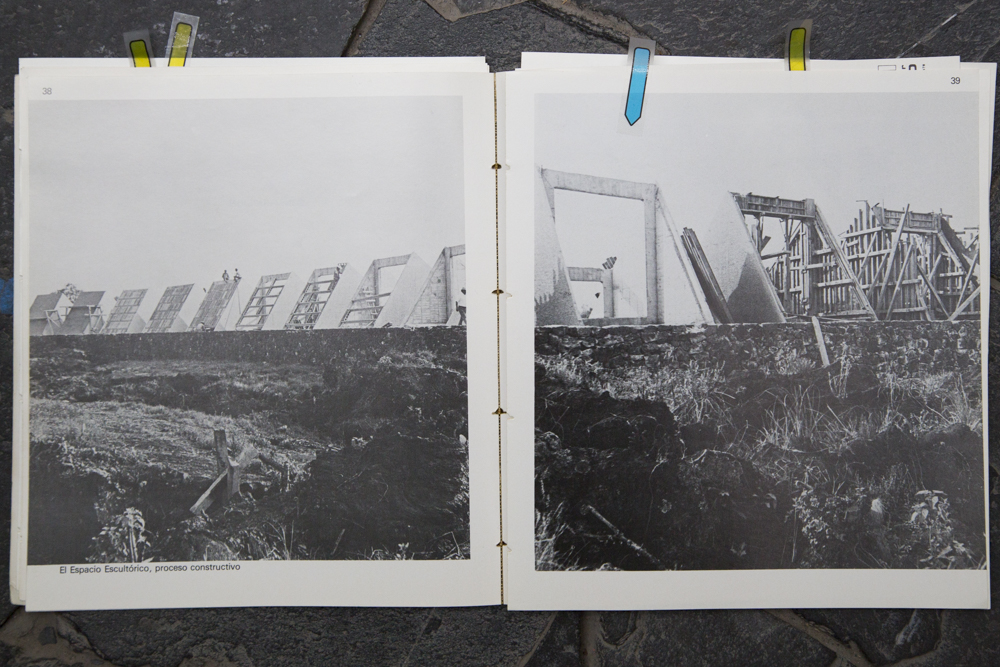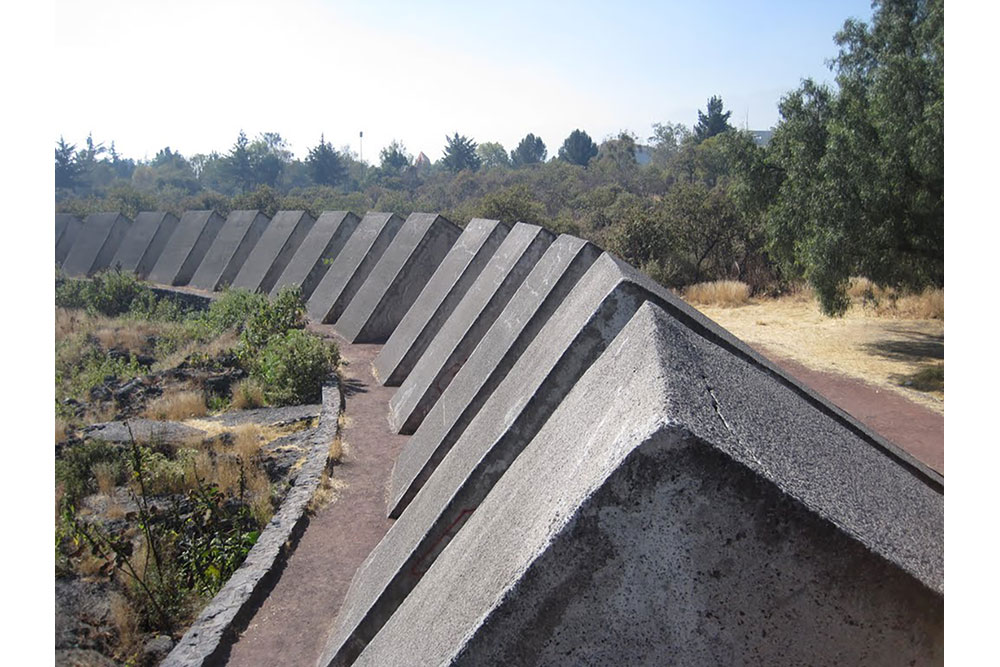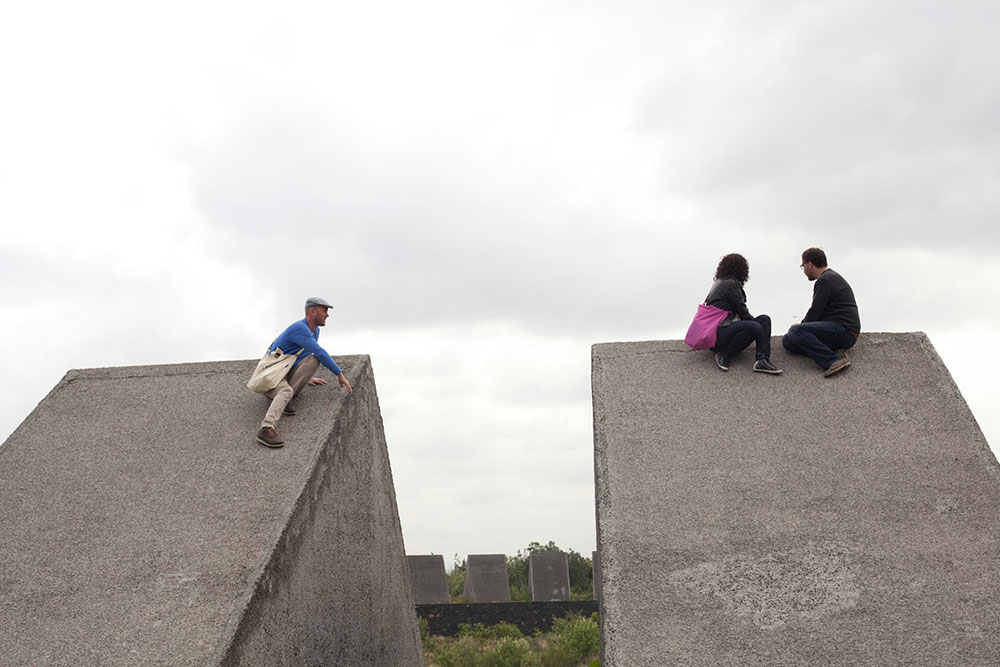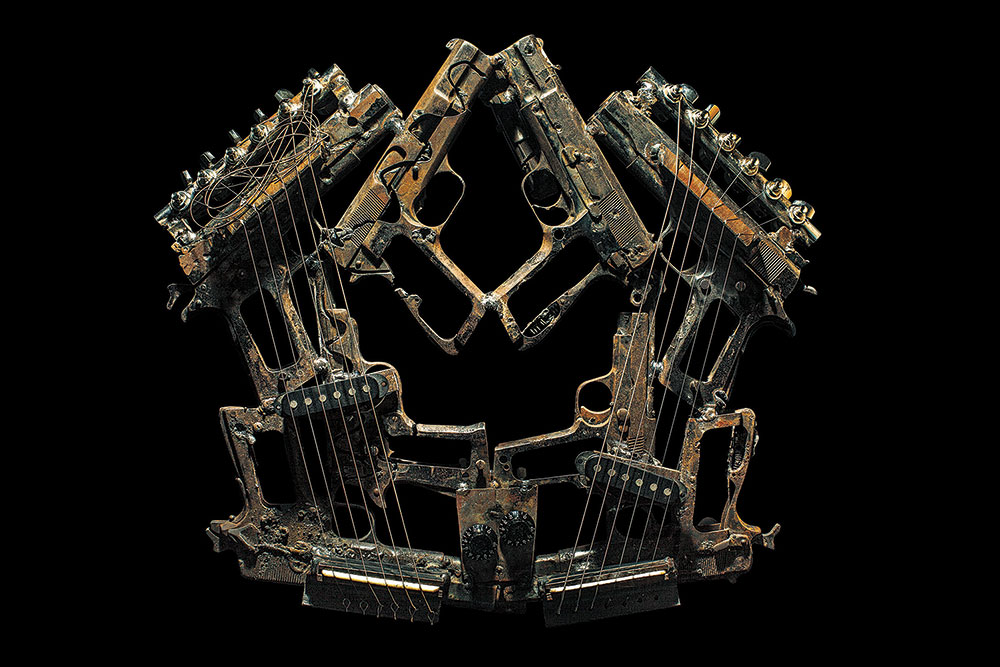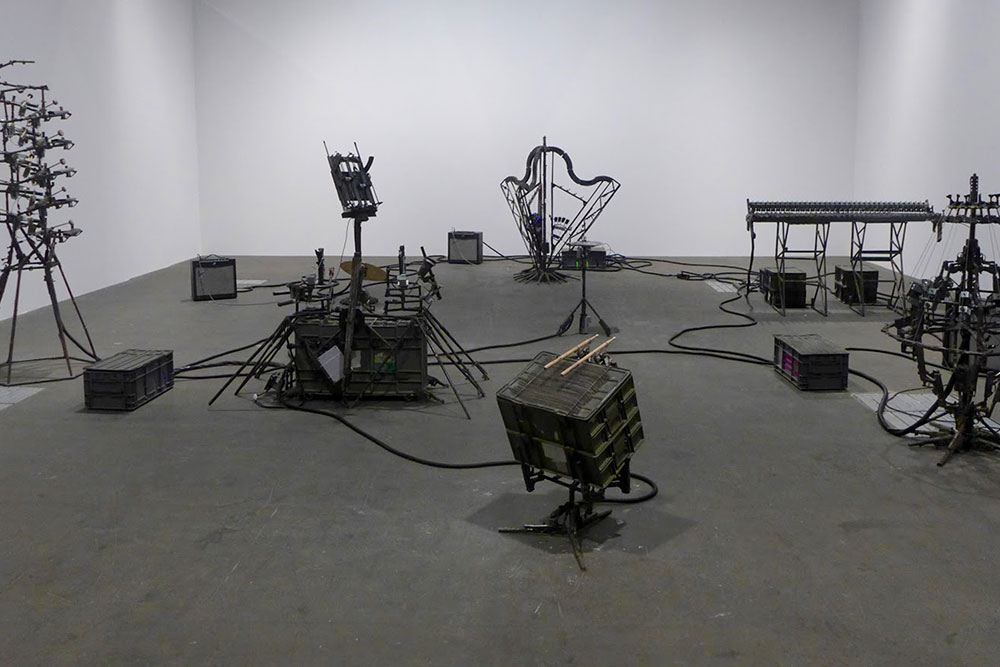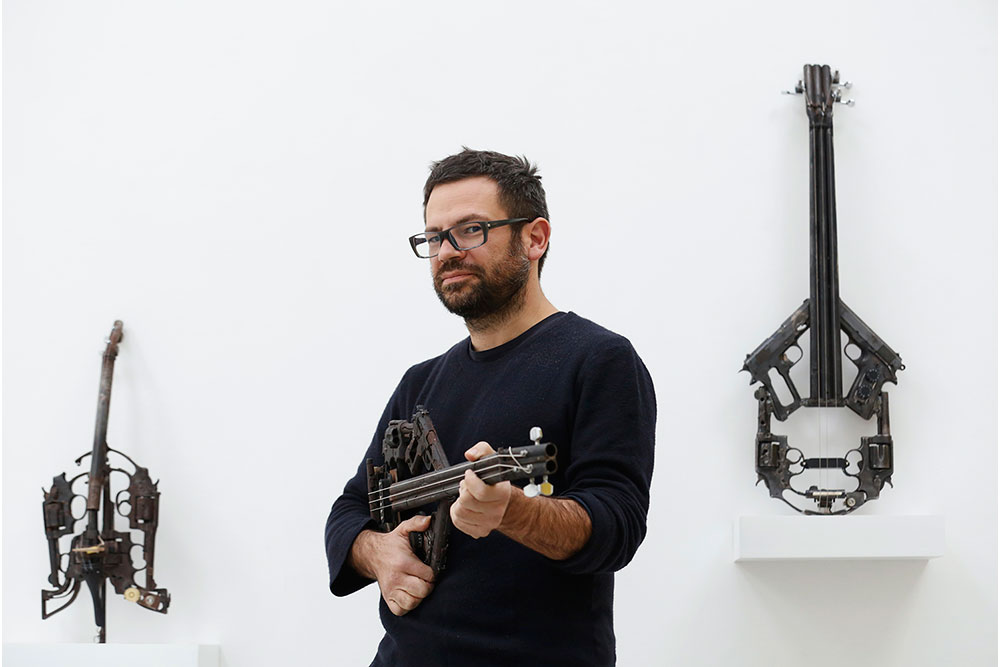Watermelon, Jicama, Coconut and Pineapple with Bee Pollen, Tajin and Sea Salt
Pedro Reyes’ Mexican Fruit Salad
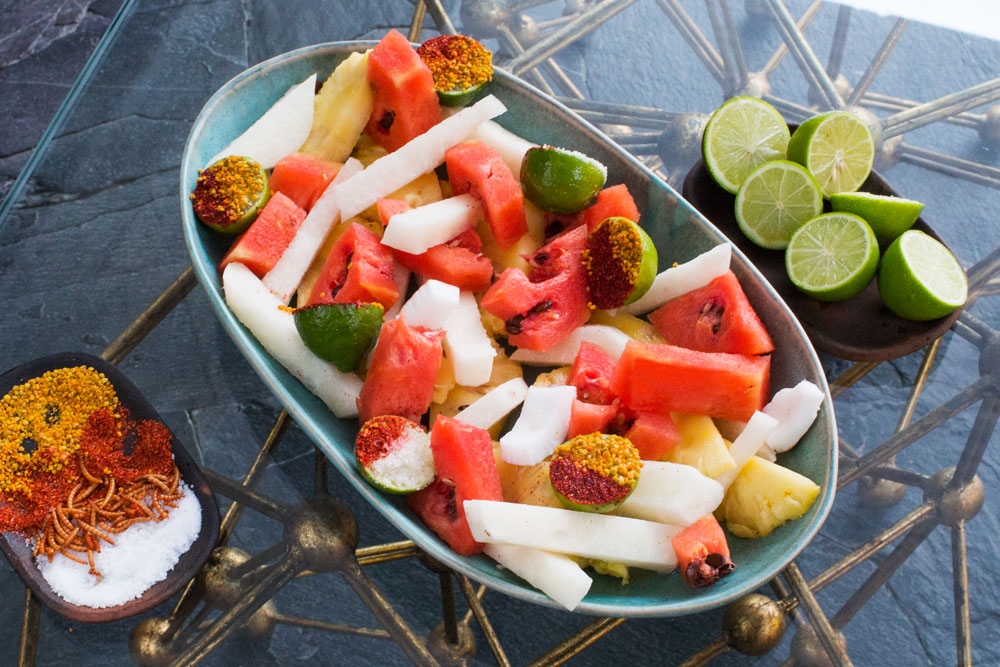
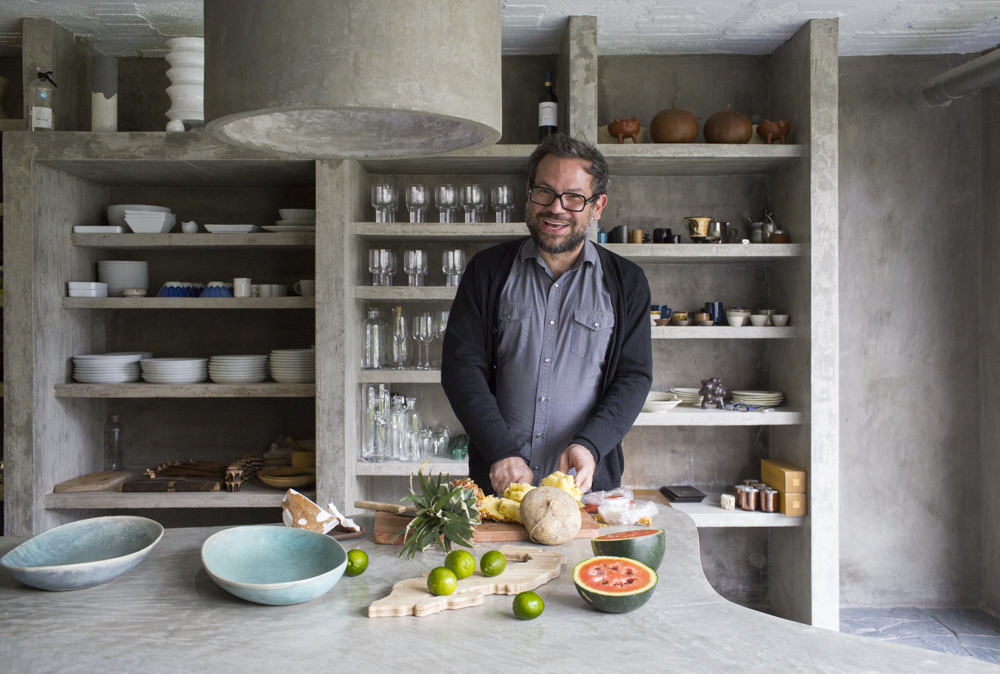
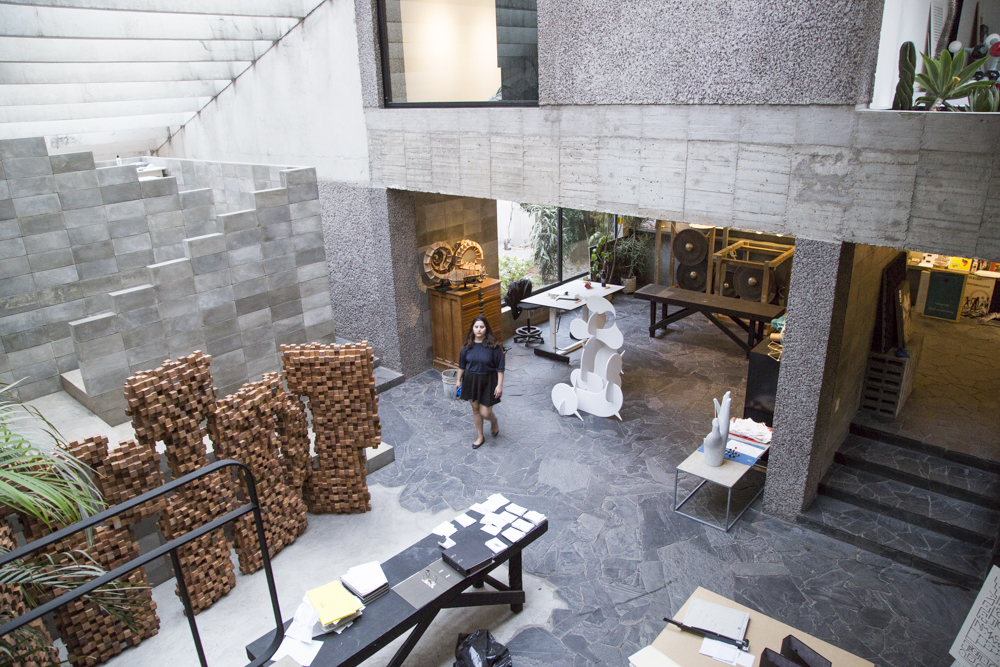
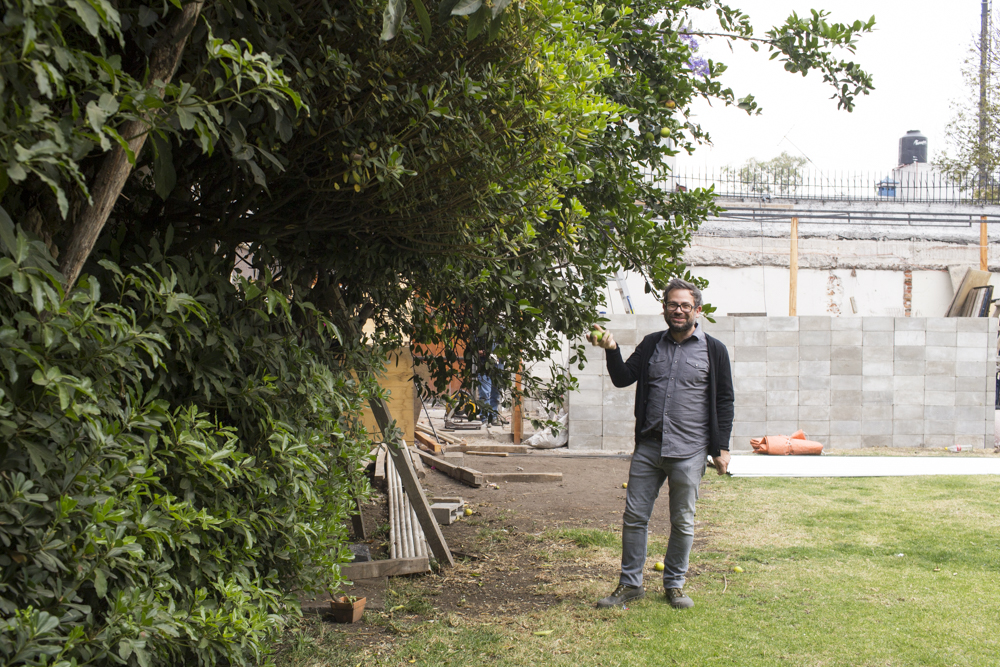

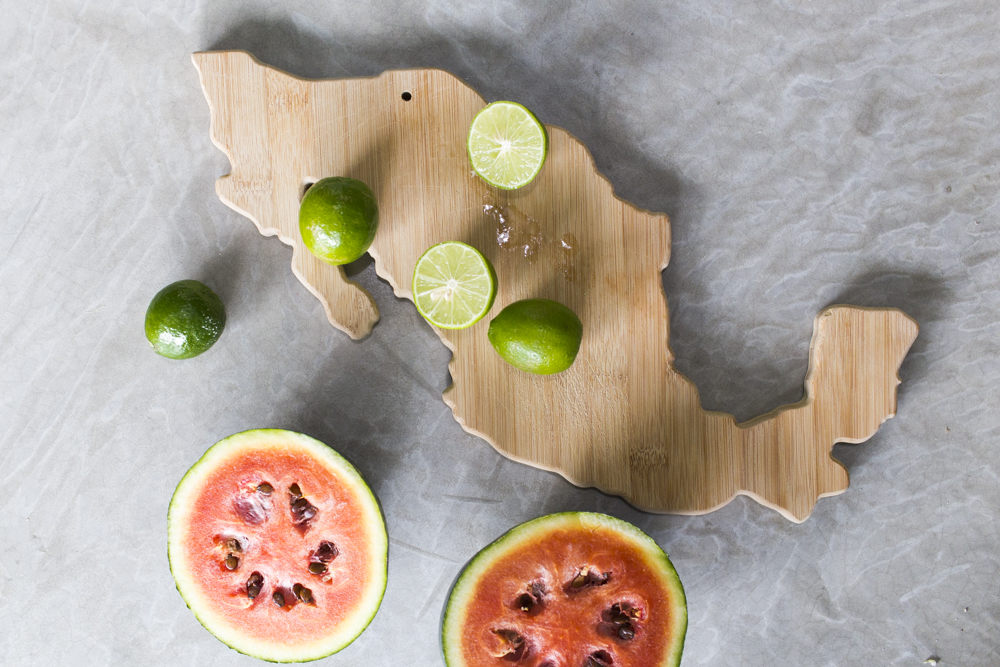
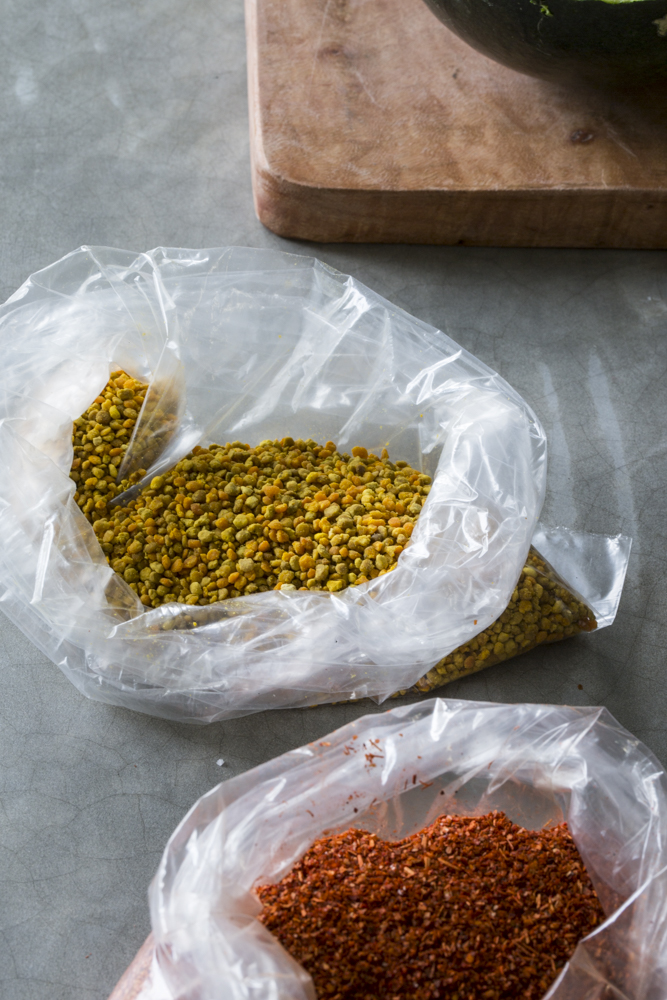
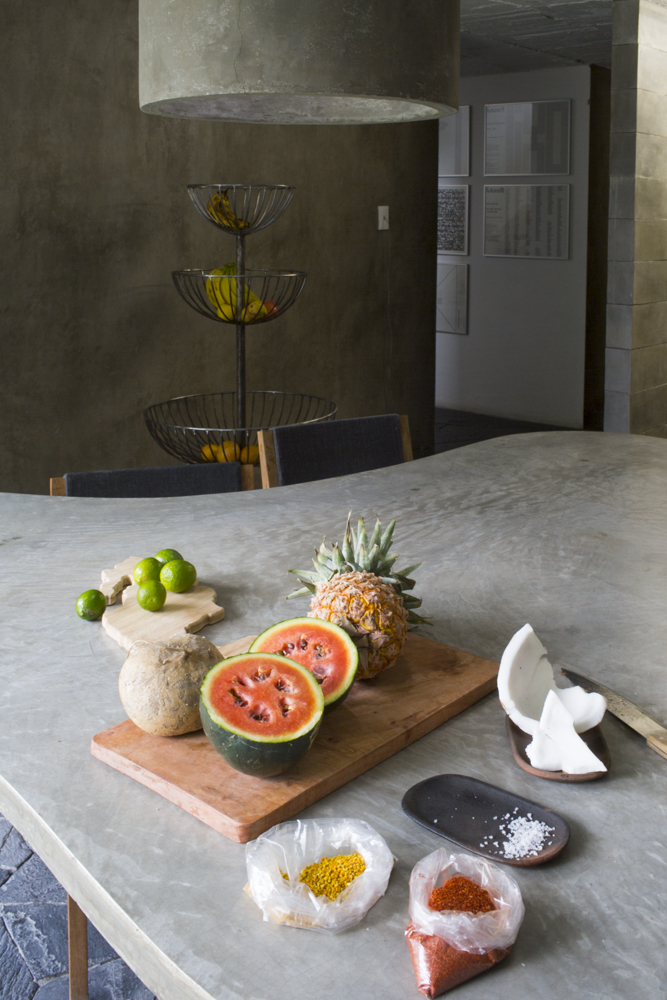
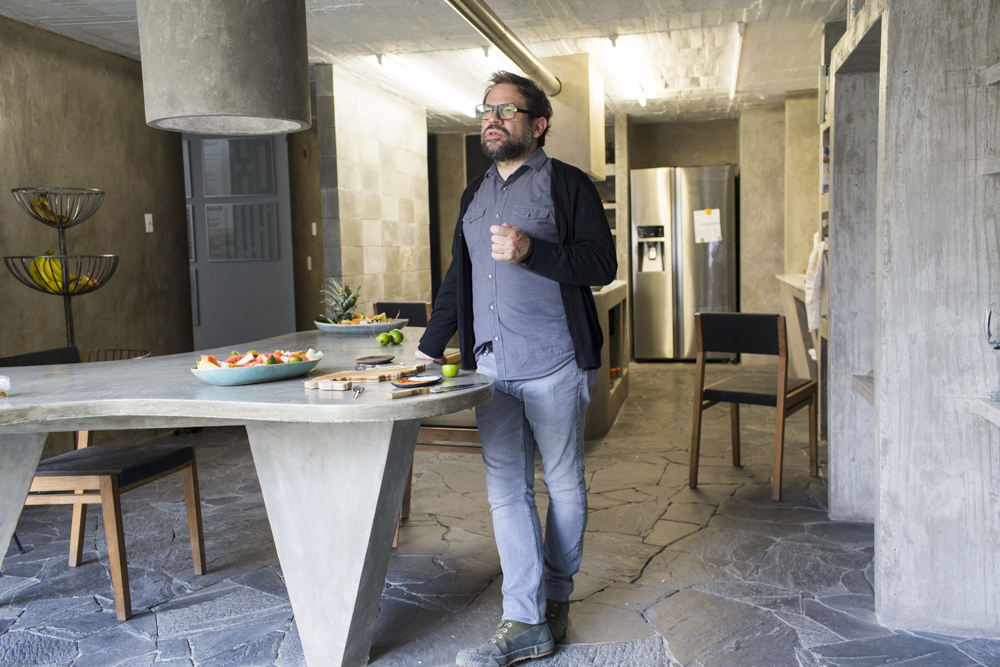
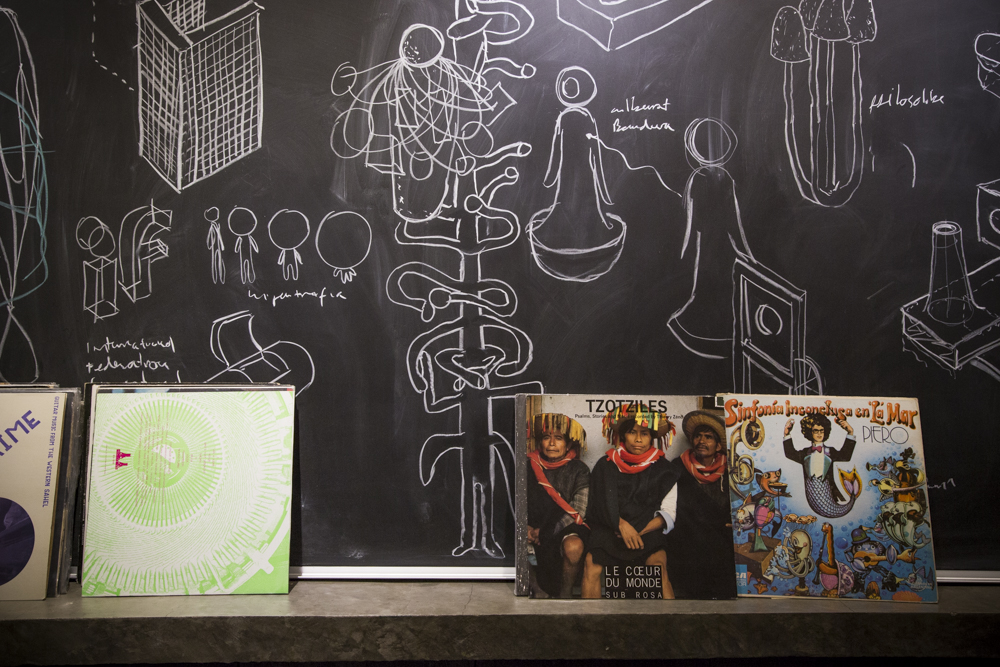
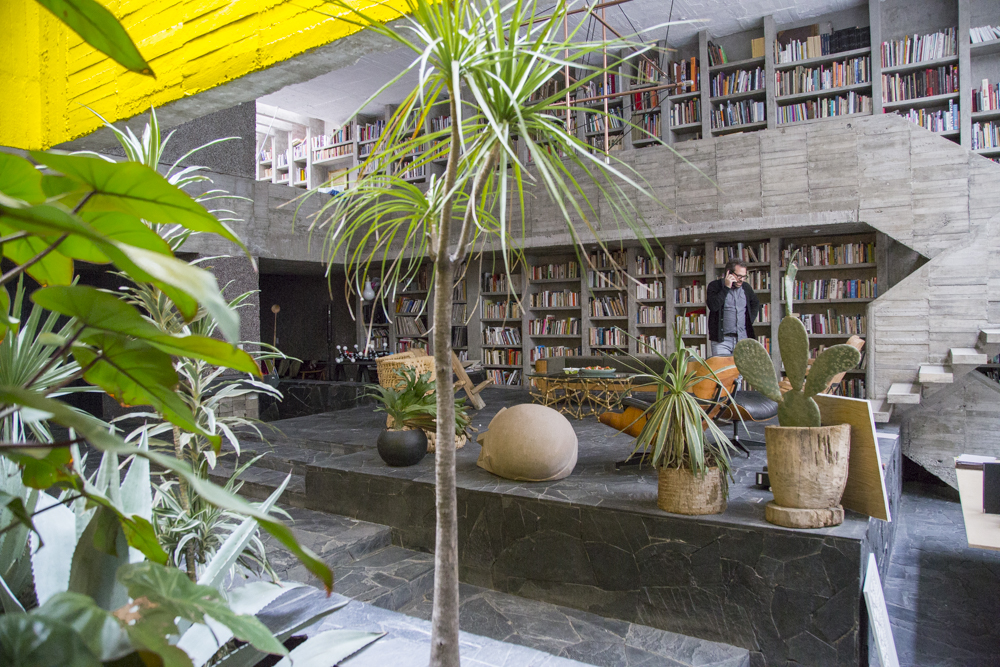
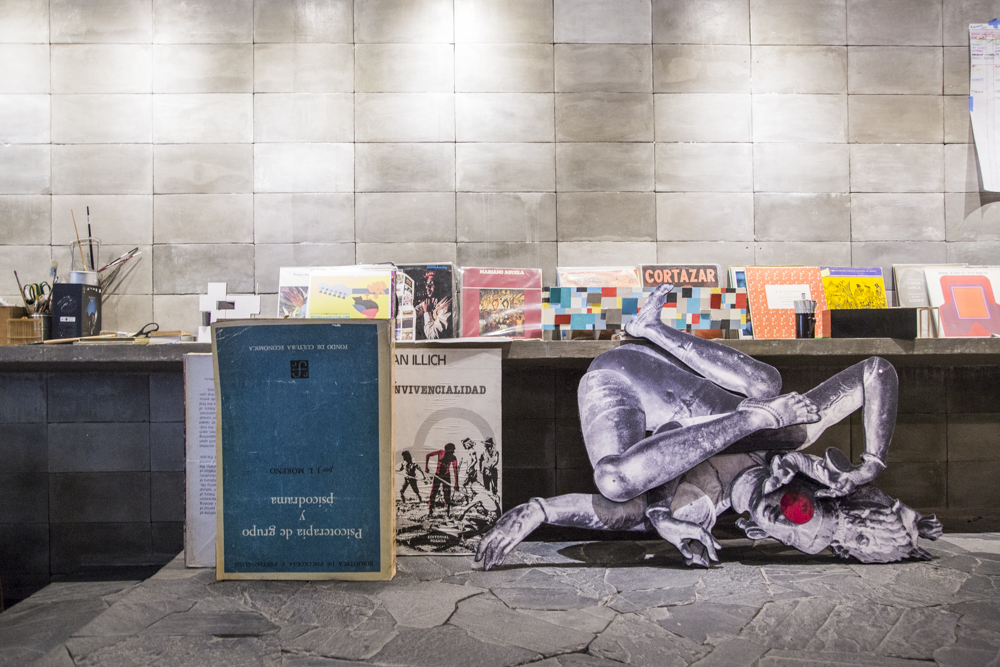
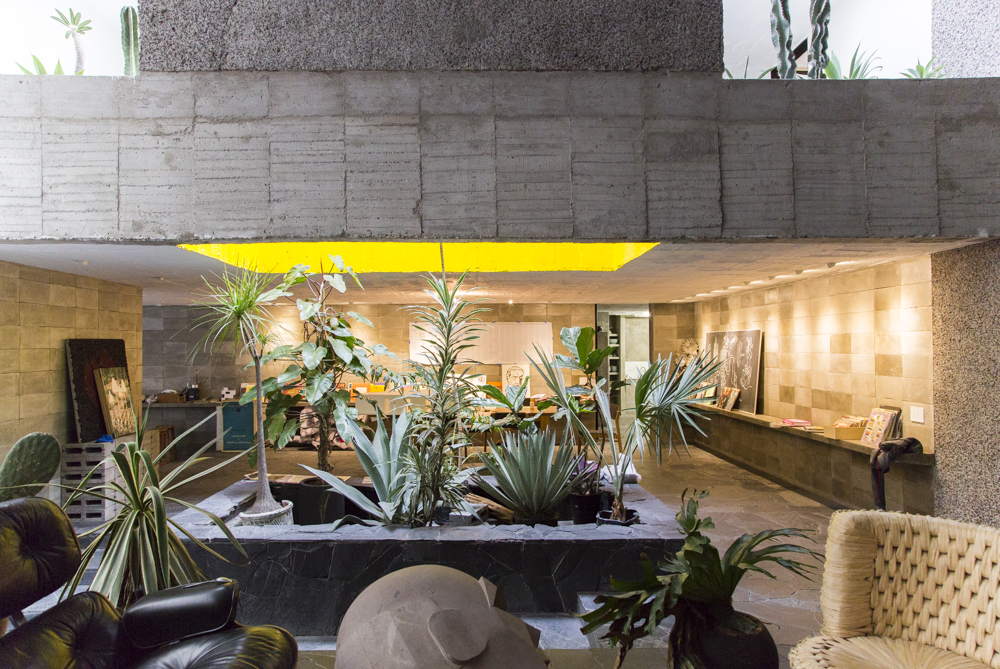
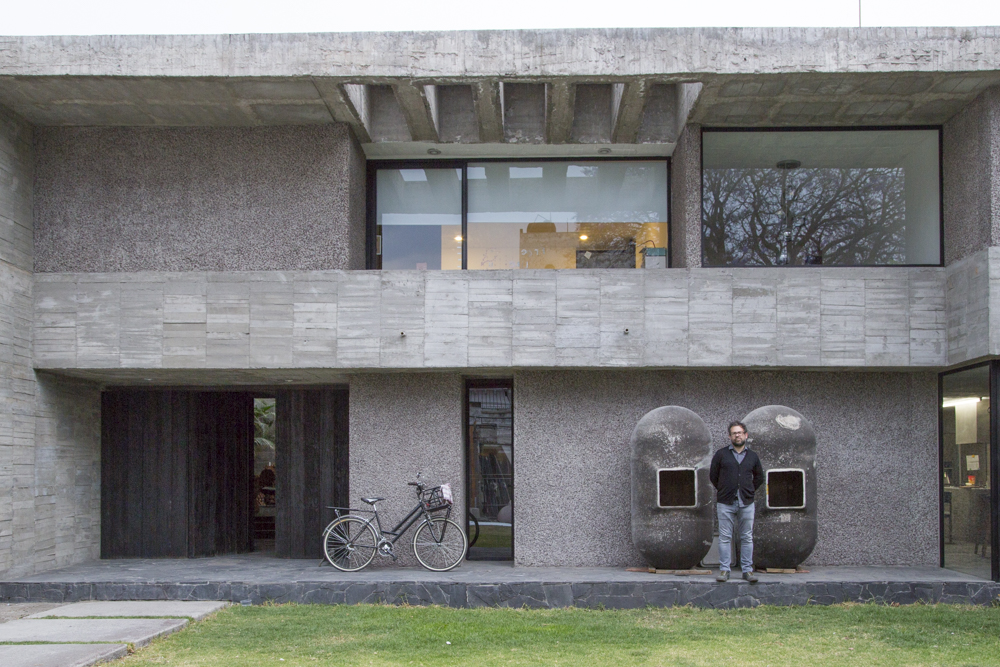
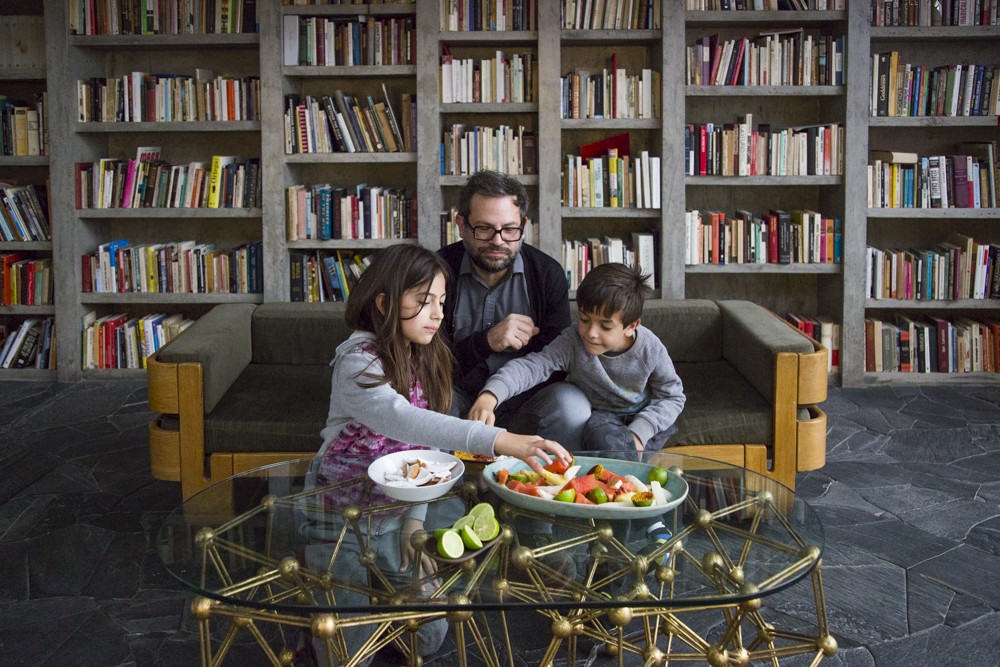
NOTES
This salad riffs on the classic Mexican street cart snack, served in plastic bags on the go. For ours, we placed the fruit on a platter and used the sliced limes to distribute the tajin, salt, lime juice and bee pollen once the dish has been served (we’re fancy like that). If you don’t have tajin, a dried mix of lime, mild chile and a little salt, go get it! This is the secret to any self-respecting Michelada (use it to rim the glasses), and it is magic on fresh cut fruit and veggies.
RECIPE
DIFFICULTY
EASY
SERVES
6
PREP TIME
5 MINS
Fruit Salad
-
1/2smallripe pineapple
-
1miniwatermelon (sub 1/4 regular watermelon)
-
1wholecoconut, flesh removed
-
1smalljicama, peeled
-
3ripelimes, cut in half
-
1tbsbee pollen
-
1tbstajin (sub chile powder)
-
1tbsfine sea salt
-
worms or crickets (optional)
INGREDIENTS
- bee pollen,
- coconut,
- JICAMA,
- lime,
- Pineapple
When I first emailed Pedro Reyes to see if he might make a salad for the blog, he replied, “I am not much of a cook, but can I make you a cricket burger?” Hmm, I thought, I have an expansive definition of ‘salad,’ but a cricket burger would be tough to justify. As a compromise, we landed on something rather straight forward – Mexican fruit salad with chile, salt and lime, or in this part of the world, just simply, fruit salad. Adding a little variation, I tossed in some bee pollen, a popular and tasty supplement in this part of the world, and Pedro added a couple of crunchy worms for protein. Pedro really likes to eat bugs.
Pedro Reyes is an internationally known sculptor who has turned Mexican firearms into instruments, staged comedic plays about the history of pharmaceuticals, and reimagined the Whopper using crickets in lieu of meat. But lately he has been admirably focused on saving an imperiled work of land art in the heart of his hometown, Mexico City. This 1977 piece by artists Helen Escobedo, Manuel Felguérez, Matias Goeritz, Hersúa, Sebastian and Federico Silva, makes up the UNAM Espacio Escultura, one of the largest sculptures in the world. Built around a naturally occurring lava rock formation, these artists collaborated to create a moment of contemplation and peace in an otherwise chaotic city. Until recently, visitors could climb the sculpture or stand in its center, where every sign of the surrounding city was obscured. But then the University erected an eight story building next to the artwork, decimating the experience of isolation created by these artists some 40 years ago. Supposedly the custodians of this historic work of art, the University did not consult the community on the matter. Apparently, they didn’t know what they were up against. Pedro has organized the top 100 artists and intellectuals in Mexico City in protest, and his videos in protest of the construction have over 300,000 hits each. He will stop at nothing to preserve this precious piece of Mexican art history.
Pedro Reyes had me to the home he and designer Carla Fernandez’s designed themselves, for salad with a side of cultural revolution.
Pedro Reyes in His Own Words
Julia: I am going to have all these photos of you cooking in this gorgeous kitchen but I hope you know I will have to tell the world that you really can’t cook, that your knives are unforgivingly dull and you don’t know where anything is in your kitchen.
Pedro: [Laughs] Ah, cooking, that’s a skill I hope to develop.
JS: I know you love to eat insects, should we add some to the dish?
PR: Well, I usually I make a cricket burger with quinoa, and I have tried it with spinach too, but it’s not so good. In Brasil I made my sandwich with ants, the size of a peanut. Delicious. In Japan they eat baby bees, but we shouldn’t be eating those; we need the bees. If you want we can have some worms with our fruit salad spice mix?
JS: Why not? Go ahead. Why do you eat them? Is it a political choice?
PR: I advocate for eating more bugs, but the crickets are the easiest to source. I like the way they taste and I’m always curious to try them. If more people paid attention to the way the meat industry really works, they would all be eating insects. Not all insects are the same. Crickets like clean environments. They are nothing like roaches.
J: So much cleaner than pigs or cows!
PR: If there is land that in unpolluted and water and plants are clean, there will be crickets there. You don’t have to worry about hormones, or how fresh it is since they are dried. It’s a very sanitary, and delicious, form of protein.
J: Well, can we try some?
PR: [Opening all his jars] We are out of crickets! Well, I also think we need a new coconut, send someone out for a coconut! There is a guy on the corner who sells the best ones. The one you brought me is dry. You need to taste a good coconut. This one is shit.
J: Great, now dip the limes in the seasoning and then I think we are done.
PR: [Finishing the dish] Ah, in Spanish a certain kind of still life painting is called Naturaleza Muerta, but what we have just made should be called a Naturaleza Viva! It’s cheezy, but it reminds me of one of Frida Kahlo’s paintings. I apologize I keep checking my phone, but I am working on saving a very important piece of land art right now.
J: Where is it? Tell me about it.
PR: The National University here in Mexico City (UNAM) is the oldest University in North America, founded in 1910. In 1952 they moved their campus and built on a site covered in lava rock. In the 70s UNAM added a cultural complex with an opera house, concert hall, film theaters, libraries and they commissioned a group of sculptors to create works of art there. The artists loved the lava rock formations, so instead of putting their individual sculptures on top, they worked together to create a frame for the rock formation itself. They made a 120 meter wide circle of cast concrete forms. It is made of minimalist prisms that you can climb, it would be unthinkable in the United States.
JS: Wow, the photos are amazing. How is it in danger now?
PR: The last provost at the University was ignorant and didn’t understand the value of this work, which is likely the largest sculpture in the world. They went ahead and built an eight story building that trashes the experience of the place just a few meters away.
JS: Did you know this was happening before it went up?
PR: No, it was closed. I am asking them to remove 4 floors from the building to preserve the view from the work of art. In the last few weeks there have been 30 newspaper articles and we already have 27,000 signatures. I am organizing an auction with Sotheby’s to raise $2 million dollars to get rid of those floors. We are telling the University that we will pay for them to fix it. I organized this campaign and I got all the artists and intellectuals behind me.
JS: So if they remove the four floors it will fix the view from the sculpture?
PR: Yes, this is the one place in Mexico City where you can stand and see no buildings around. The videos we put on the internet have 300,000 views. But the people in power, they are all over 60 years old and don’t look at the internet. They are not aware of social media.
J: Doesn’t that give you an advantage?
PR: Well, they don’t get it. When I went in for our meeting, their secretary had printed out the relevant Facebook posts for them.
JS: What have you learned in the process?
PR: Producing change is very difficult and you have to be willing to change your methods to get results. I can either tell them to fuck off, or I can work with them, but ultimately, I need to do what I can to get the job done.

